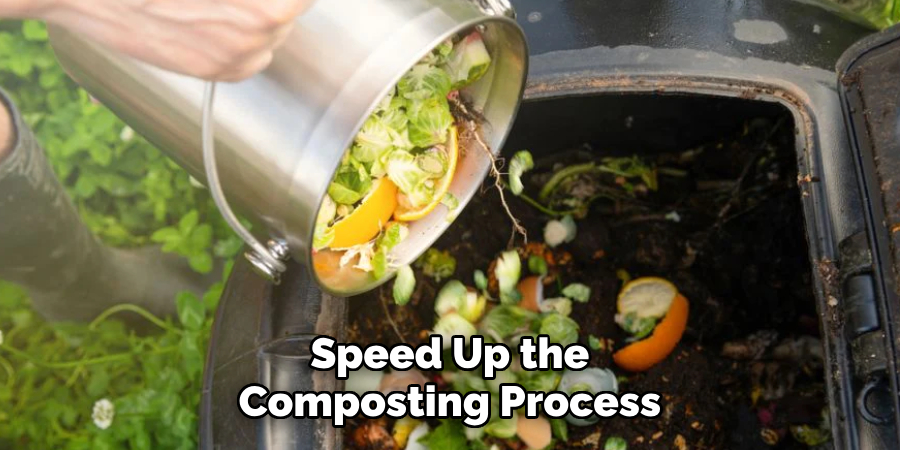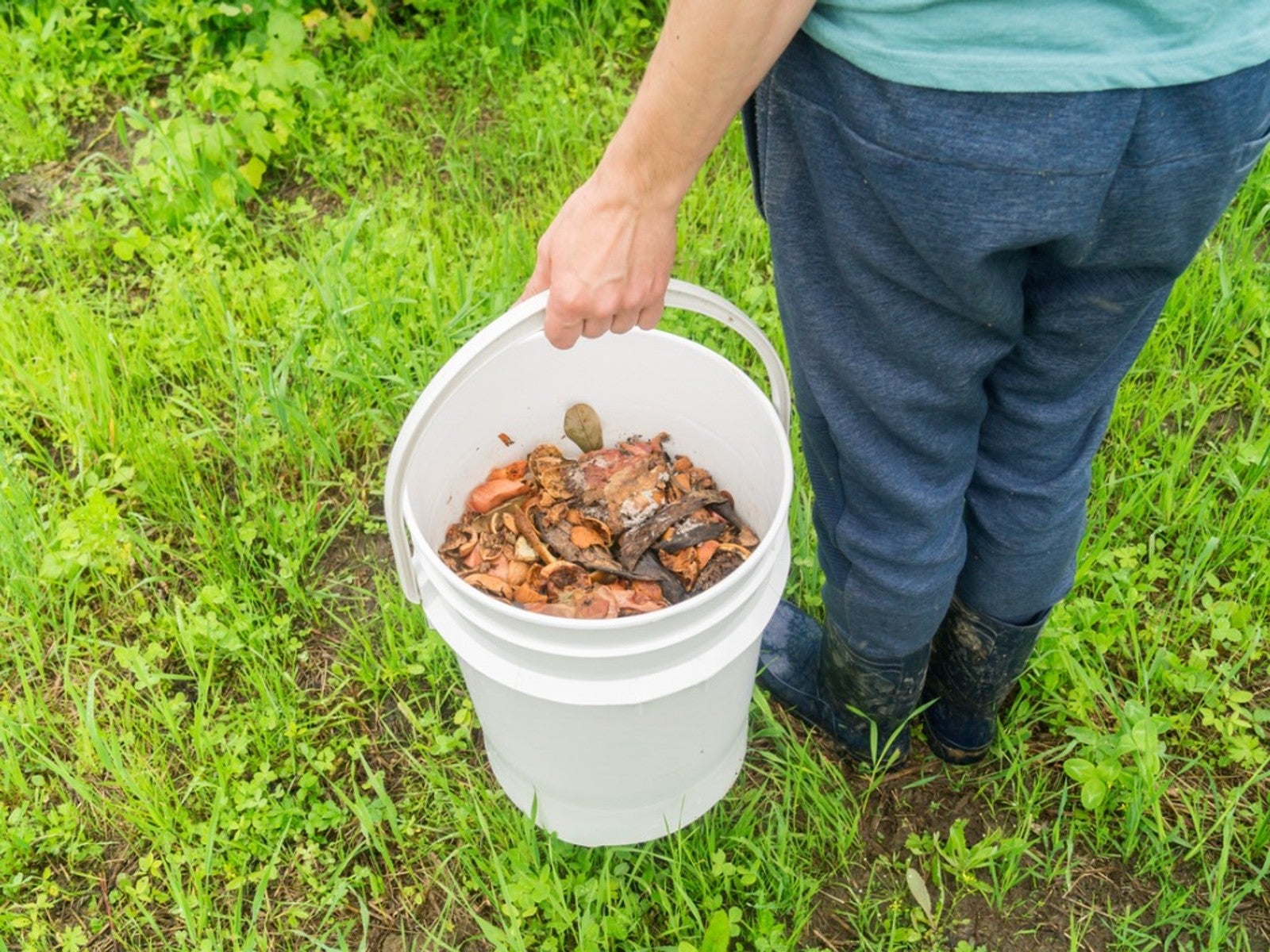To compost in a bucket, start by layering green and brown organic waste materials, such as food scraps and yard trimmings. Then add water, mix it all together, and cover the bucket to keep the heat in.
Within a few weeks, the waste will decompose, turning into nutrient-rich compost that can be used to fertilize plants. Composting in a bucket is an easy, affordable, and convenient way to recycle organic waste and reduce your carbon footprint. It is especially useful for those with limited outdoor space or who live in urban areas.
By following a simple process and being mindful of what materials you include, you can successfully compost in a bucket and enjoy the benefits of enriching your soil naturally.

Credit: m.youtube.com
Why Composting In A Bucket Is Beneficial
Composting in a bucket offers several benefits. One key advantage is the minimal space requirement, making it accessible even for those with limited area. Additionally, this method is incredibly user-friendly and convenient. It provides a sustainable solution for managing waste, allowing individuals to reduce their environmental footprint.
By composting in a bucket, people can actively participate in the creation of nutrient-rich soil without any added hassle. This approach promotes eco-friendly practices and contributes to a healthier planet. Embracing composting in a bucket is a practical and effective way to repurpose organic waste and make a positive impact on the environment.
How to Compost in a Bucket: Step by Step Guide
Getting Started With Composting In A Bucket
Getting started with composting in a bucket requires choosing the right bucket. Ensure it has air vents for proper decomposition. Layering your compost materials effectively is important to fasten the process. Achieve a perfect balance of green and brown waste for optimal composting.
Maintaining And Caring For Your Compost In A Bucket
Maintaining and caring for your compost in a bucket requires monitoring temperature and moisture levels closely. Regularly turning and aerating the compost ensures proper decomposition. Troubleshooting common issues such as foul odors or excessive pests is essential for a successful composting process.
When it’s time to harvest your finished compost, make sure to use it wisely in your garden to maximize its benefits. Composting in a bucket is a convenient and eco-friendly way to recycle kitchen scraps and organic waste. By following these simple steps, you can create nutrient-rich compost that will enrich your soil and promote healthy plant growth.
Start composting in a bucket to reduce waste and create a sustainable garden ecosystem.
Advantages Of Composting In A Bucket
Composting in a bucket offers several advantages, such as reducing kitchen waste and minimizing landfill contribution. By composting, you can create nutrient-rich organic matter that can be used as a natural fertilizer for your plants. This not only helps the environment but also saves you money on chemical fertilizers and soil amendments.
Composting in a bucket is an easy and convenient way to recycle your food scraps and turn them into valuable compost. Plus, it doesn’t require a large outdoor space, making it accessible to anyone, regardless of their living situation. So, instead of throwing away your kitchen waste, consider composting in a bucket to support sustainable gardening and do your part in reducing waste.
Tips And Tricks For Successful Bucket Composting
Composting in a bucket is an eco-friendly way to reduce waste and create nutrient-rich soil. To ensure successful bucket composting, here are some tips and tricks. First, consider adding natural accelerators to speed up the composting process. This can include items like leaves or grass clippings.

Next, make use of compostable food scraps and yard waste, such as fruit peels and trimmings from plants. Finally, incorporate other compostable materials from your home, such as coffee grounds or eggshells. Remember to avoid adding meat, dairy, or oily items to your bucket compost.
By following these dos and don’ts, you can create a thriving composting system right in your own home.
Choosing The Right Location For Your Compost Bucket
Choosing the right location for your compost bucket is crucial for successful composting. Whether you’re composting indoors or outdoors, there are a few considerations to take into account. For apartment dwellers, indoor composting may be the only option. Find a spot in your apartment that is convenient for you to access daily.
Consider using a smaller compost bucket that can fit under the sink or in a closet. If you have the option to compost outdoors, sunlight and temperature requirements are important factors. Choose a location that receives a good amount of sunlight throughout the day.
Avoid placing your compost bucket in areas that are too hot or too cold, as extreme temperatures can affect the composting process. Remember, the location of your compost bucket can significantly impact the success of your composting efforts. Take the time to find the right spot for your circumstances, and you’ll be on your way to producing nutrient-rich compost for your plants.
Sustainable Composting Practices For Bucket Composting
Bucket composting is an excellent way to practice sustainable composting at home. By using compostable packaging and materials, such as biodegradable bags, you can ensure that your composting process remains eco-friendly. Adding organic additives, like grass clippings or kitchen scraps, can help improve the quality of your compost.
It is important to implement eco-friendly practices, such as turning the compost regularly and maintaining the right moisture levels. These practices will accelerate the decomposition process and create nutrient-rich compost for your plants. So, if you’re looking to reduce waste and create a healthy environment, bucket composting is definitely worth considering.
Start composting in a bucket today to contribute to a greener future!
Frequently Asked Questions On How To Compost In A Bucket
How Do I Start Composting In A Bucket?
To start composting in a bucket, begin with a layer of brown materials like dried leaves or cardboard. Follow with a layer of green materials such as fruit and vegetable scraps. Alternate between the two layers, keeping the compost moist but not wet.
Can I Compost Meat And Dairy Products In A Bucket?
It is not recommended to compost meat and dairy products in a bucket. These items can attract pests and create unpleasant odors. Stick to composting fruit and vegetable scraps, coffee grounds, and eggshells for a successful composting process.
How Often Should I Turn My Compost In A Bucket?
You should turn your compost in a bucket every 3-5 days to ensure proper airflow and decomposition. This helps prevent the growth of anaerobic bacteria and speeds up the composting process. If you notice a foul smell, it’s a sign that your compost needs more oxygen and should be turned more frequently.
Conclusion
Composting in a bucket is a simple and efficient way to recycle organic waste and create nutrient-rich soil for your plants. By following the steps outlined in this blog post, you can turn your kitchen scraps and yard waste into a valuable resource.
Remember to choose the right container, layer your materials properly, and provide the right amount of moisture and air circulation. Don’t forget to turn the compost regularly to speed up the decomposition process. With a little time and effort, you can reduce waste, improve your soil health, and contribute to a more sustainable future.
So go ahead and give composting in a bucket a try – your garden (and the environment) will thank you!

